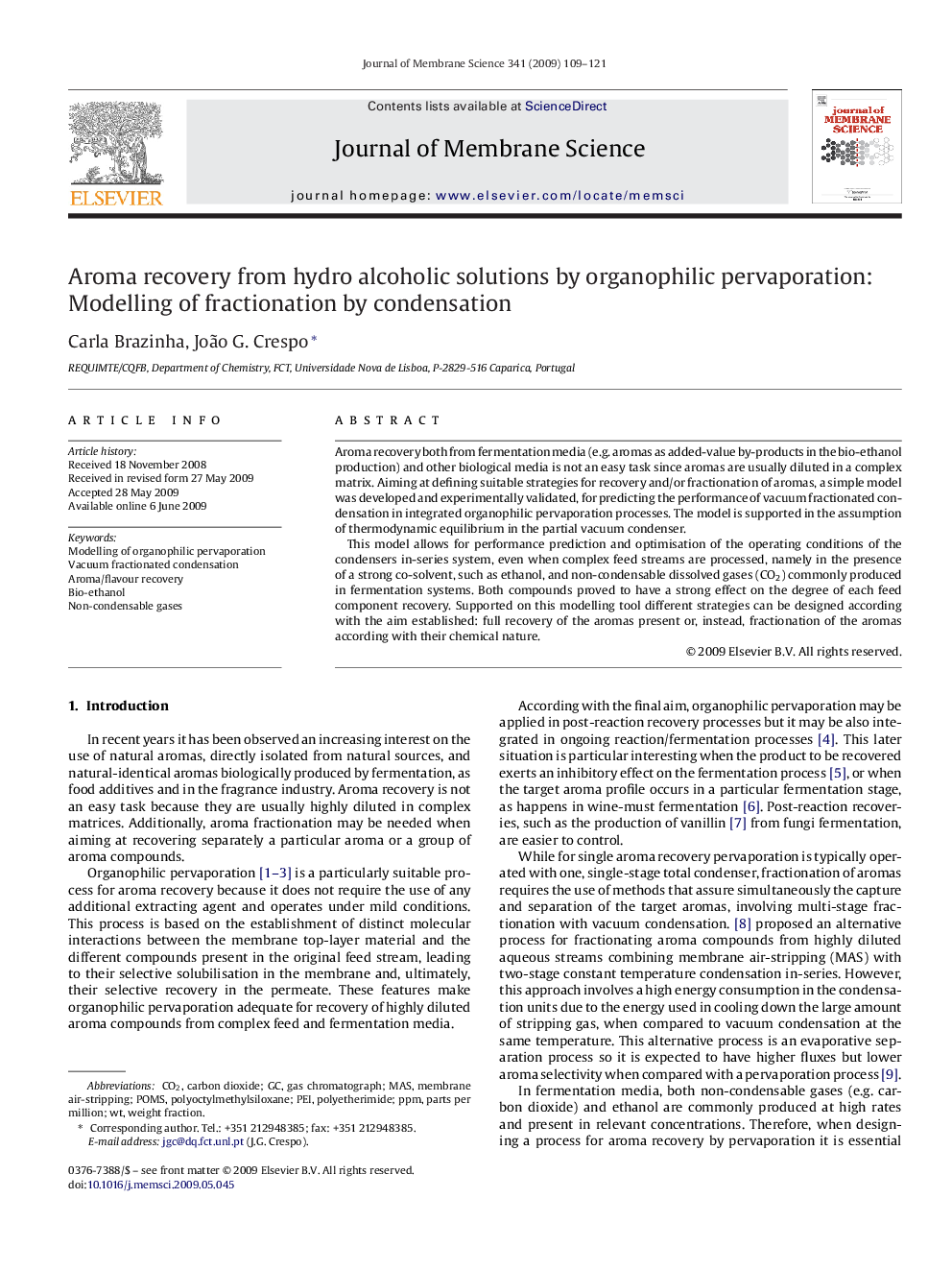| Article ID | Journal | Published Year | Pages | File Type |
|---|---|---|---|---|
| 636842 | Journal of Membrane Science | 2009 | 13 Pages |
Aroma recovery both from fermentation media (e.g. aromas as added-value by-products in the bio-ethanol production) and other biological media is not an easy task since aromas are usually diluted in a complex matrix. Aiming at defining suitable strategies for recovery and/or fractionation of aromas, a simple model was developed and experimentally validated, for predicting the performance of vacuum fractionated condensation in integrated organophilic pervaporation processes. The model is supported in the assumption of thermodynamic equilibrium in the partial vacuum condenser.This model allows for performance prediction and optimisation of the operating conditions of the condensers in-series system, even when complex feed streams are processed, namely in the presence of a strong co-solvent, such as ethanol, and non-condensable dissolved gases (CO2) commonly produced in fermentation systems. Both compounds proved to have a strong effect on the degree of each feed component recovery. Supported on this modelling tool different strategies can be designed according with the aim established: full recovery of the aromas present or, instead, fractionation of the aromas according with their chemical nature.
